






I am happy to be asked to write my second message in the Newsletter. After 9 months tenure at the SOP, I continue to be amazed by the leadership, commitment, resilience, high motivation and service orientation of our students I am also thrilled to see many examples of their advocacy for our profession.

As a profession, we offer society a unique service which impacts their health and wellbeing. The Newsletter is one example of providing evidence based health information.
In this edition, our students are highlighting the topics of Breast and Prostate Cancer as well as many of the co-curricular activities they are involved in to increase awareness and knowledge. This important activity and others are also critical to shape the professional identity of our students and for them to truly exhibit the responsibility, a hallmark of a professional, to impact their fellow students, members of the healthcare, and the larger public. I am very appreciative of our students and the faculty for this diligent work on the Newsletter.

It is with utmost pride and excitement that I share with you this academic year ’ s first issue of the Sixth Floor News, prepared and published by a passionate and dedicated team of our SOP students.
With us being back to full in person attendance on campus, students were thrilled and worked wholeheartedly to prepare a special issue of our newsletter, putting their skills, creativity, enthusiasm, and passion into perspective, despite the demotivating challenges we are still facing on a daily basis.
The current issue focuses mainly on breast and prostate cancers, which are the most common cancers in Lebanon in female and male patients, respectively. Cancer treatment remains a challenge for Lebanese patients who struggle to secure their chemotherapy medications as it is almost impossible to be found on the market, partly due to the subsidization, but also due to smuggling Patients are reaching out to family members, friends, or even acquaintances from outside Lebanon to secure their chemo regimens. This comes with its own risks, namely counterfeit medications, or inappropriate storage conditions, adding another distress to an already exhausted patient
Raising awareness, patient education, and close coordination between all stakeholders in patient care is needed to get through these hardships.
Enjoy reading a professionally-written edition of the Sixth Floor news Please do not hesitate to share any feedback you may have!



Breast cancer is a disease in which cells in the breast grow out of control. The kind of breast cancer depends on which cells in the breast turn into cancer. It most often spreads to the bones, liver, lungs, and brain.






The best time to perform self-examinations is the week after menstruation ends.
Squeeze your hips, and observe any pitting in the breasts.
Raise your hands and check for any abnormal changes.
Rub your breast in a circular motion to feel for any lumps.




Press along the axilliary region to feel any lumps in the lymph nodes.
Women aged 45 to 54 should get mammograms every year.
Women aged 55 and older should switch to mammograms every 2 years, or can continue yearly screening.
Screening should continue as long as a woman is in good health and is expected to live 10 more years or longer.



Combination: Double blockade of HER2 and incresed response
HER2 targeted therapy Oral TKI Direct inhibition of downstream tyrosine kinase domain
Target HER2-presenting cells
Trastuzumab Emastine
Targeted delivery of highly cytotoxic agent
Trastuzumab
Pertuzumab
Binds on extracellular domain of HER2, slows tumor growth by reversing/blocking signaling agents
Inhibition of receptor dimerixation
A new discovery in medicinal chemistry highlights 1,2,3 triazoles derived from naturally available Coumarin. The Coumarin moiety, thanks to its excellent safety profile and potential to interact with a variety of enzymes and receptors such as kinase, telomerase, and aromatase, was found to be an excellent pharmacophore for the development of novel anticancer agents.
Some of the discovered compounds displayed potent CDK9 target inhibition, which is emerging as a promising target of anticancer therapy with functions in apoptosis and differentiation/proliferation switch and in T cell and lymphoid B cell differentiation. This way, hybrid molecules are introduced for anti breast cancer drug design, and further research could eventually concretize into new agents to combat the difficult disease.









PSA, or prostate-specific antigen, is a protein made by the prostate gland and released in the blood. Its production usually increases with age.

PSA is specific to the prostate gland and not to cancer, but its level correlates with the risk of prostate cancer:
PSA < 4 ng/mL: 15% chance of having prostate cancer
PSA between 4 and 10 ng/mL: 30 to 35% chance of having prostate cancer
PSA >10 ng/mL: 67% chance of having prostate cancer
High throughput sequencing technologies have been developed to advance knowledge on transcription. A new discovery highlights the role of long noncoding RNAs (lncRNAs) in human cellular function and disease.
Transcripts longer than 200 nucleotides with no coding potential. Epigenetic factors; do not encode for any protein. Regulate gene expression at transcriptional, posttranscriptional, and epigenetic levels. Their expression can undergo dysregulation, and there is evidence of the involvement of lncRNAs in tumor development and disease progression.
Therefore, due to the role of lncRNAs in regulating malignant transformation and disease progression in breast cancer, and the existence of lncRNAs with a tumor-promoting role in prostate cancer, they are a promising target of new pharmacotherapies for both the diagnosis or treatment.
Xtandi (Enzalutamide), is a nonsteroidal antiandrogen (NSAA) drug used in the treatment of prostate cancer. The ENACT trial was a phase 2, open-label, randomized clinical trial conducted from June 2016 to August 2020 in US and Canadian sites. The trial found that in the 227 patients tested, and compared with active surveillance alone, enzalutamide significantly reduced the risk of prostate cancer progression by 46% and was well tolerated, suggesting that enzalutamide monotherapy may be an alternative treatment to active surveillance for low-risk and intermediate-risk localized prostate cancer.
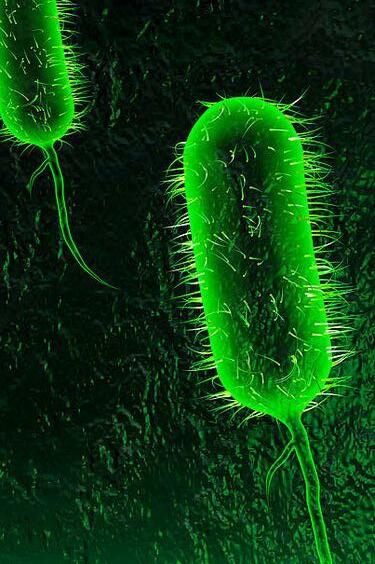







Curious high schoolers visited LAU to get to know the pharmacy major. There were several stops where pharmacy students of all levels had the chance to talk about the academic challenges and the exciting student life of pharmacy school. High schoolers asked questions, played games, and enjoyed their time touring the Byblos campus!
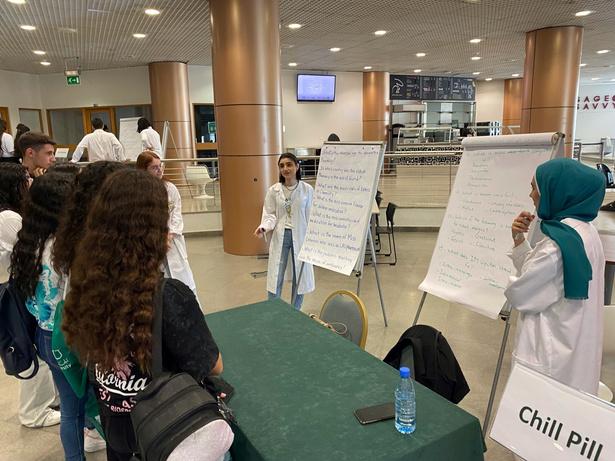


October 28
Because the month of October is that of standing in solidarity with breast cancer survivors and raising awareness about the disease, pharmacy students got the chance to participate in several events, on and off-campus, to help in educating the public. Here, they are seen wearing pink on the occasion.

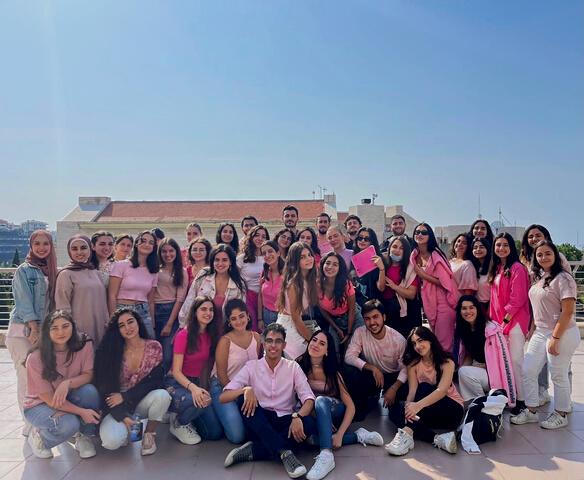


October 28
As tradition goes, this year ’ s P1 students received their white coats at the yearly White Coat Ceremony held by the SOP. The students were very excited to enter into their professional years of pharmacy school. We send them all our best wishes as they embark on this amazing journey!


November 2
NAPHASS collaborated with the Pre Medical Society for an on campus awareness campaign for colorectal and prostate cancer. The club pioneered the initiative, collaborating as well with Said NGO, which brought a life sized model of a colon to explore and explain the pathology of colorectal cancer at the tissue level. Students also designed posters around both prostate and colorectal cancer and readily answered the questions of anyone passing by.


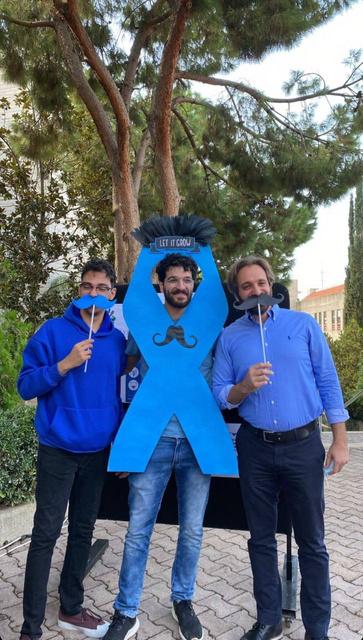
Pharmacy students had a little - welldeserved fun time at the student lounge, singing and dancing. The karaoke night, organized by P2 students, was a blast to say the least. The best part was that both students and staff got to sing their favorite song!



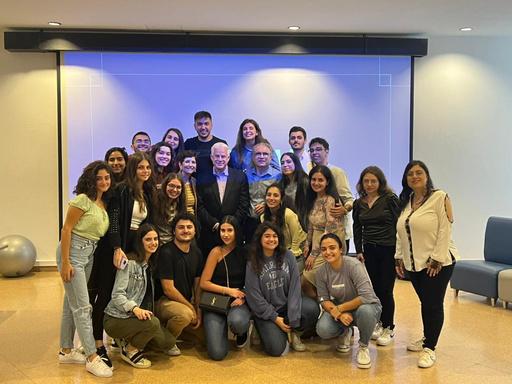




November 25
Antimicrobial resistance is every pharmacist’s nightmare! For this reason, the Pharmacy Education Committee, with the aim of highlighting the importance of this issue, organized a booth to educate students of all majors on antimicrobials, including when and how to use them. Students were excited to answer the questions and charades prepared by the committee, which definitely boosted their knowledge on antibiotics!





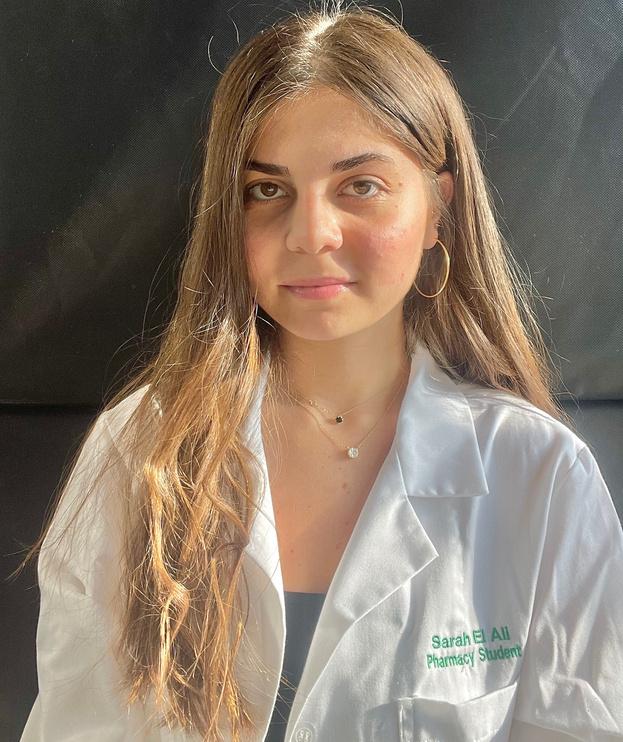



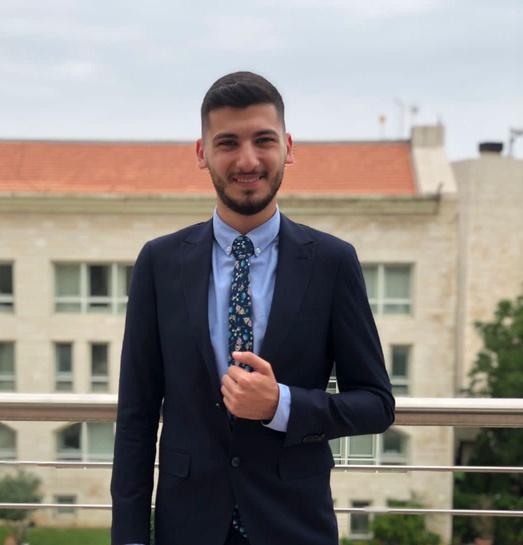


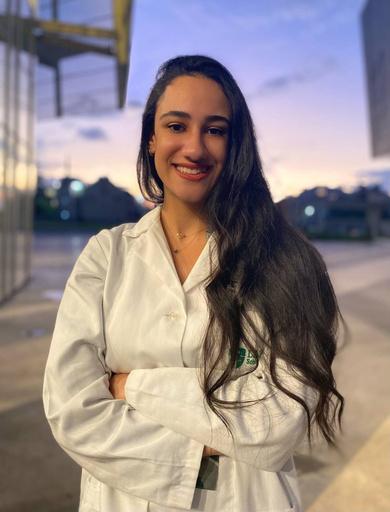

 Adriana Sadek, P2 Chairperson of the Media Committee
Jessica Eid, P2 Secretary of the Media Committee
Cyrielle Saba, P3 Chairperson of the Education Committee
Abdo El Hayek, P1 Secretary of the Education Committee
Nour Chidiac, P3 Chairperson of the Newsletter Committee
Amanda Rose Khater, P4 Secretary of the Newsletter Committee
Adriana Sadek, P2 Chairperson of the Media Committee
Jessica Eid, P2 Secretary of the Media Committee
Cyrielle Saba, P3 Chairperson of the Education Committee
Abdo El Hayek, P1 Secretary of the Education Committee
Nour Chidiac, P3 Chairperson of the Newsletter Committee
Amanda Rose Khater, P4 Secretary of the Newsletter Committee

Dear Readers,
For two consecutive years, I have had the honor of serving as chair of the Co-Curricular Activities Committee and witnessing the dependability and self-discipline of our members.
I would like to express my deepest appreciation to the committee members. I can proudly say that against all odds, we have been able to demonstrate that success is the result of hard work in adverse times.
I would also like to extend special thanks to the Newsletter Committee for its continued commitment to the values and mission of the CCA Committee. The latter played a decisive role in the publication of the prostate and breast cancer issue, along with the steadfast leadership and tireless support of the CCA Coordinator, Dr. Aline Bou Maroun.
On that note, I hope you have had an enjoyable read and that we have enriched your knowledge of prostate and breast cancer and met your expectations!
Animals can also develop breast cancer, not only humans. Despite being more common in dogs than cats, it is typically more aggressive in cats.
A 20% decrease in the incidence of prostate cancer was observed in patients with a weekly increase in tomato sauce consumption. According to the Health Professionals Follow-up Study. Lycopene, the red pigment that gives tomatoes their color, may be to thank for this. However, more data from clinical trials are required to further demonstrate this.
Ancient treatments for breast cancer frequently used insect feces and were regarded as one of the most cutting-edge remedies until the Middle Ages. According to an Egyptian papyrus, a mixture of cow ' s brain and wasp dung should be given topically to breast tumors for four days. Fortunately, treatments have come a long way since then...
Many men who experience erection problems after having surgery for prostate cancer see significant recovery within a year, with up to 50% recovering their usual function.
Grateful for being part of Rebangerissa :)
ToNourChidiac
Thank youfor alwaysbeingbymyside, for motivatingme andforbeingthe onei can share anythingwith.I’m sohappywe getto worktogether andbe creative together!Love you.
You are a ball of sunshine and I hope that you’ll stay that way forever. I am so happy I got to meet you and I really wish you the best.
You are a literal beam of sunshine, always supportive, always caring, always hyping up everyone around you. Thank you for existing and for spreading smiles wherever you go.
ToAbdoElHayek
ToVanaMekhsiJerjian
Thank you for beingthe most amazingfriend ever and for actuallybeing one of the highlights of my year. You are always so supportive and I’m so glad I have you in mylife. I wish you’ll achieve all of your dreams and to always believe in yourself because you ’re so smart and powerful and capable of doing anything you want!
Youarealwayssohelpfulandkindwitheveryone andI’msohappyImetsomeonelikeyou. I appreciateyoualotandthankyousomuchfor beinganamazingfriendandformaking pharmacyschoolbearable.
ToCelineBeydoun
I'm so happy we became friends this year and thank you for your incredible support! pharmacy school is more tolerable with you.
Thank you for being always positive and kind. Literally the kindest human being ever. Love you Vanaaaaa the best.
ToHibaAlqassab
Thank youfor caringabout our "ghada." Thank youforbeingso kind.Love youHiba.
You are suchanamazingperson andI am sogratefulto have metyou in this life. Thankyou for always encouraging others to do more andgive more. Loveyou always.
Thank you for all that you have taught me!


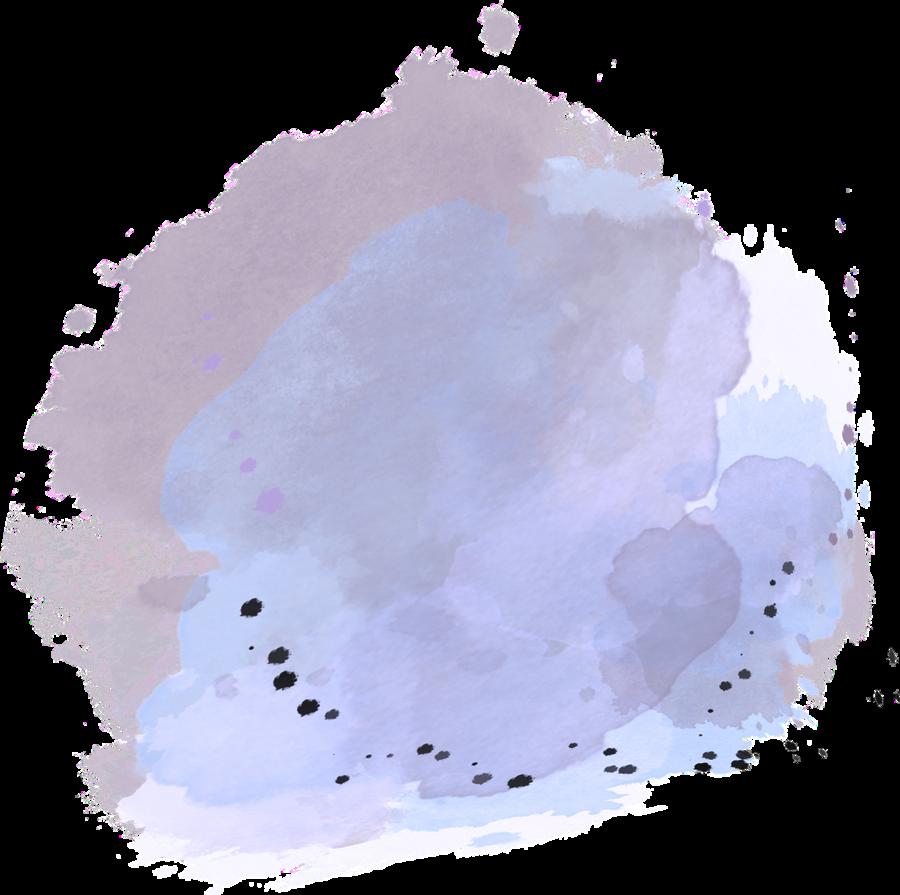
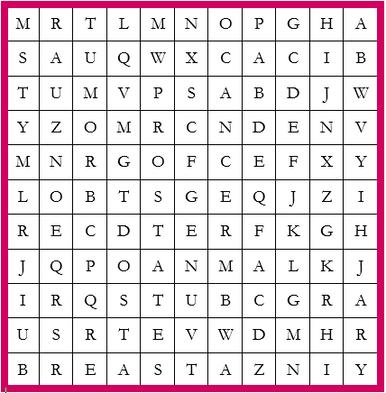

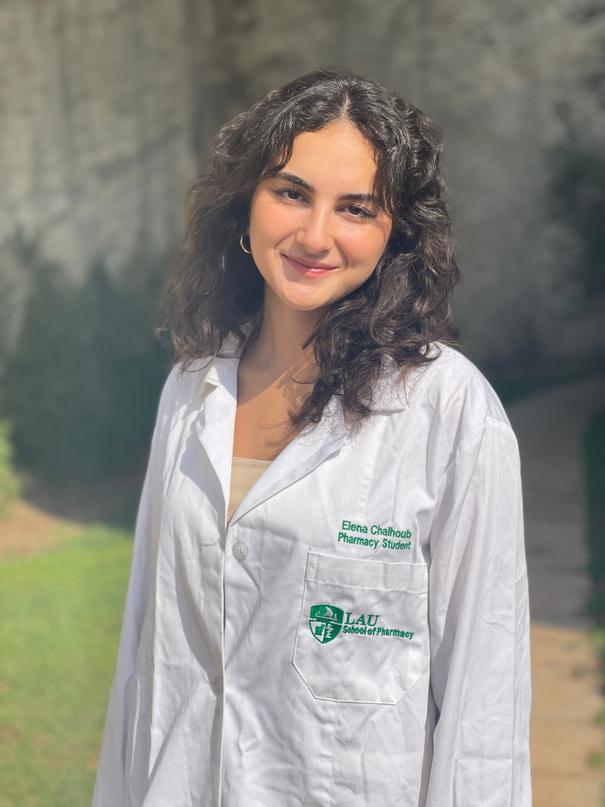

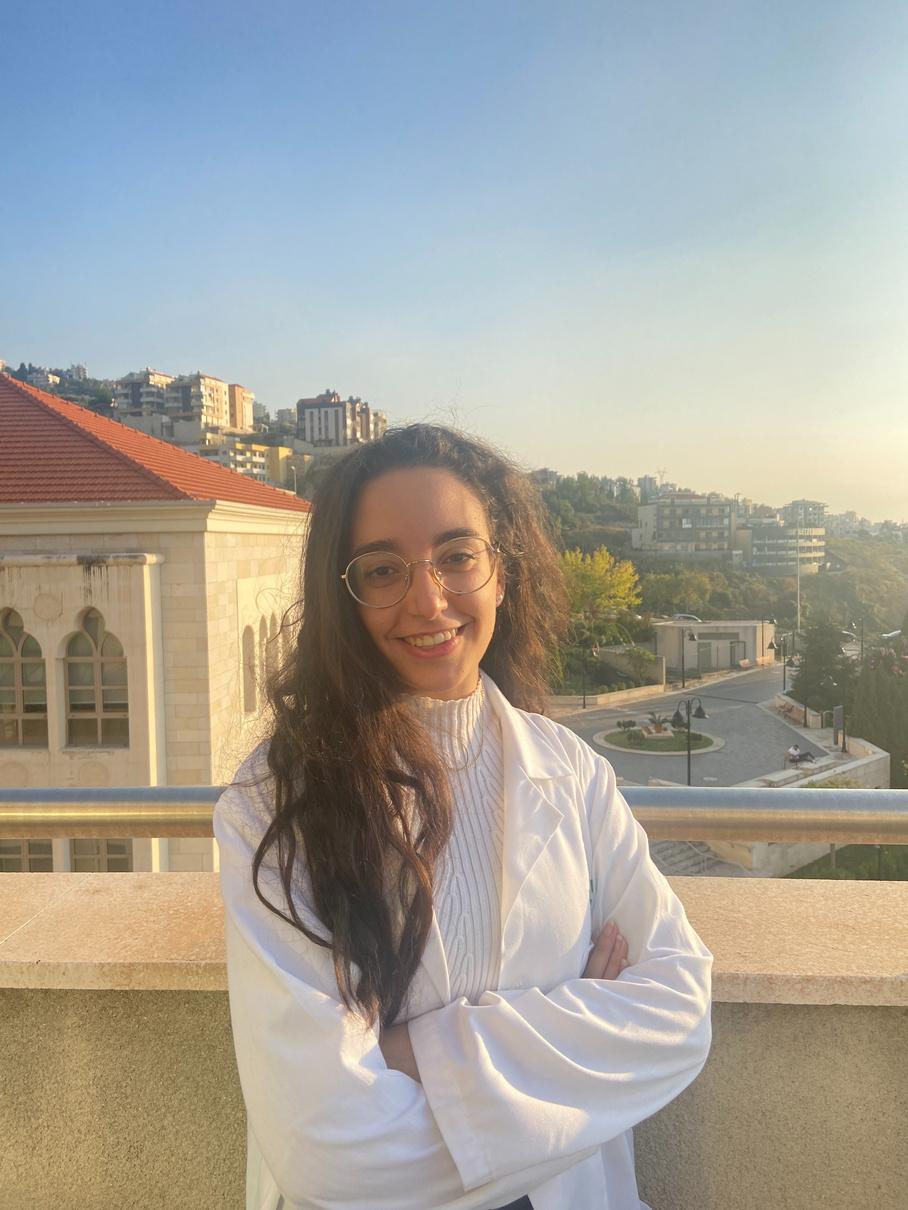


 Rita El Murr, P3 Writer & Editor
Nour Rehayem, P3 Designer
Elena Chalhoub, P2 Designer
Nour Chidiac, P3 Chairperson Designer & Editor
Amanda Rose Khater, P4 Secretary Designer & Editor
Rita El Murr, P3 Writer & Editor
Nour Rehayem, P3 Designer
Elena Chalhoub, P2 Designer
Nour Chidiac, P3 Chairperson Designer & Editor
Amanda Rose Khater, P4 Secretary Designer & Editor

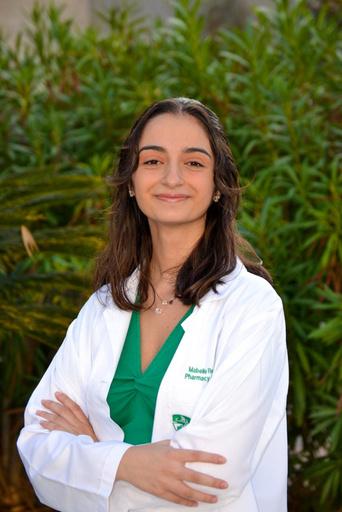






 Mabelle Rechdan, P2 Writer, Editor Mahmoud Nasrallah, P2 Designer
Marc Anlian, P2 Writer
Nour Adra, P2 Editor
Sarah El Ali, P2 Writer
Thea Maria Nader, P2 Writer
Yara Azar, P2 Designer
Maria Fadel, P1 Writer & Designer
Mabelle Rechdan, P2 Writer, Editor Mahmoud Nasrallah, P2 Designer
Marc Anlian, P2 Writer
Nour Adra, P2 Editor
Sarah El Ali, P2 Writer
Thea Maria Nader, P2 Writer
Yara Azar, P2 Designer
Maria Fadel, P1 Writer & Designer

Online Presentation by Dr. Jad Ghaddar, D.Pharm, MSc, PGDip, EUSOP Certified, ASHP Certified in Pediatric Oncology
Online Presentation by Dr Carl Aoun, B S Pharm, Pharm D , BCPS
Sideris, N. et al. (2022) LncRNAs in breast cancer: A link to future approaches, Nature News. Nature Publishing Group. Available at: https://www.nature.com/articles/s41417 022 00487 w (Accessed: November 28, 2022).
Mirzaei, S et al (2022) Molecular landscape of lncrnas in prostate cancer: A focus on pathways and therapeutic targets for Intervention Journal of Experimental & Clinical Cancer Research, SpringerLink BioMed Central Available at: https://link springer com/article/10 1186/s13046 022 02406 1 (Accessed: November 28, 2022).
Neal D. Shore, M.D. (2022) Enzalutamide monotherapy vs active surveillance in patients with low risk or intermediate risk localized prostate cancer, JAMA Oncology. JAMA Network. Available at: https://jamanetwork.com/journals/jamaoncology/article abstract/2793567 (Accessed: November 28, 2022).
Author links open overlay panelSaleh K IhmaidaAteyatallahAljuhanibMosaAlsehlibNadjetRezkibPersonEnvelopeAliAlawicAhme d J AldhafiricSamir A SalamadPersonEnvelopeHany E A AhmedaeMohamed R Aouadb et al (2021) Discovery of triaromatic flexible agents bearing 1,2,3 triazole with selective and potent anti breast cancer activity and CDK9 inhibition supported by molecular dynamics, Journal of Molecular Structure. Elsevier. Available at: https://www.sciencedirect.com/science/article/pii/S0022286021016963 (Accessed: November 28, 2022).
Antibiotic treatment (2022) Centers for Disease Control and Prevention Centers for Disease Control and Prevention Available at: https://www cdc gov/cholera/treatment/antibiotic treatment html (Accessed: November 28, 2022)
Cholera (no date) World Health Organization. World Health Organization. Available at: https://www.who.int/news room/fact sheets/detail/cholera (Accessed: November 28, 2022).
This is the last page.